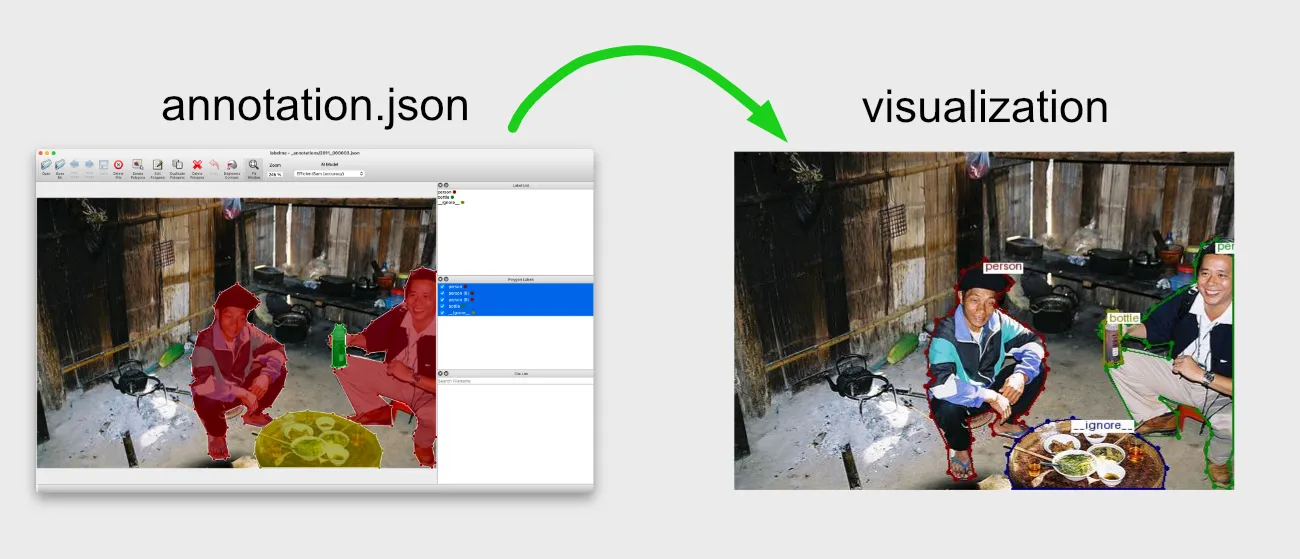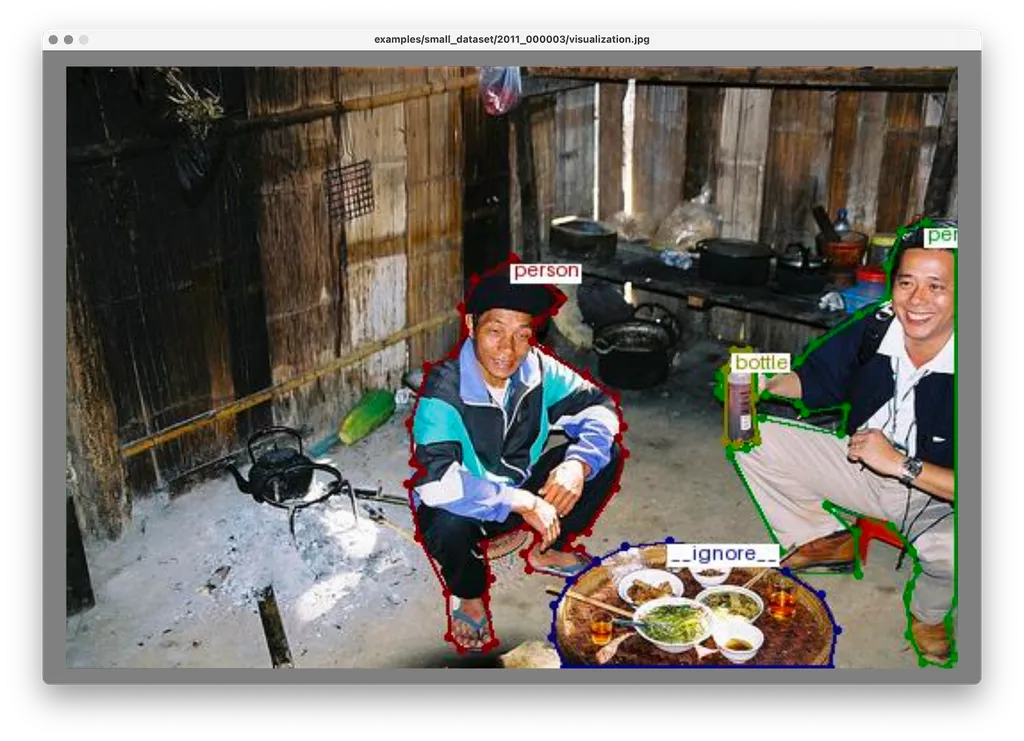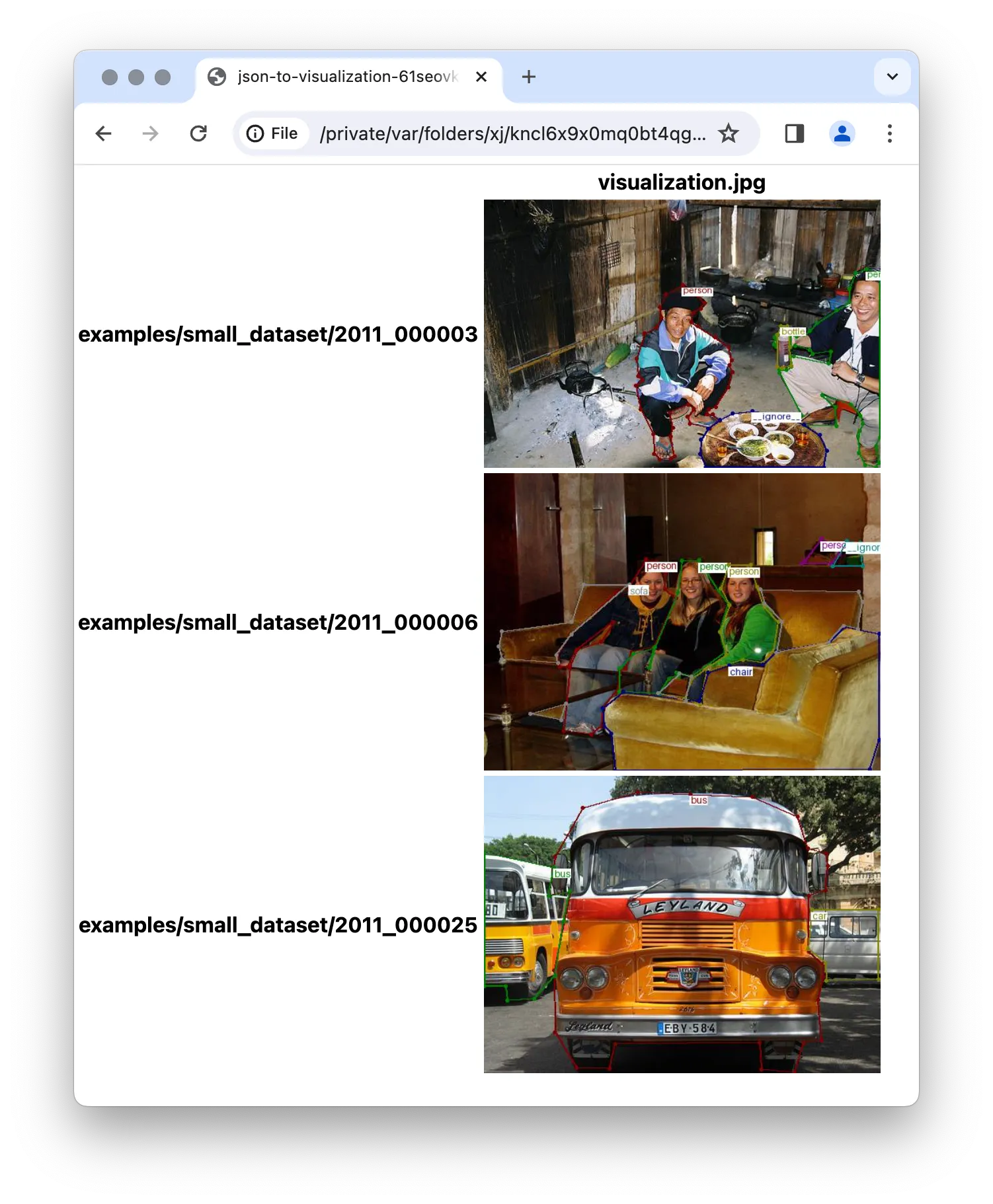json-to-visualization
You need to be a Pro member to access the full content of this.
json-to-visualization creates a visualization image from a Labelme JSON file.

Usage
Pass either a JSON file or directory of JSON files.
labelmetk json-to-visualiation [OPTIONS] FILE_OR_DIR...
Use the following options to customize the output:
--exclude-labels TEXT: Labels to exclude. If you have labels you’d like to exclude (e.g.,__ignore__label for the region you want to skip labeling) pass these into this option (e.g.,--exclude-labels __ignore__).--browse: Browse images on a browser. If you pass this option, the command opens the browser to show images as an table.
Example: Convert a JSON file
If you only have a single JSON file, pass it to the command:
labelmetk json-to-visualization small_dataset/2011_000003.json
to get a visualiation image:
 

Example: Convert a directory of JSON files
If you have multiple JSON files in a directory, pass the directory to the command:
labelmetk json-to-visualization small_dataset
to get a visualization image for each:


Example: Exclude some labels
If you’d like to exclude some of the labels when creating a visualization, pass --exclude-labels:
labelmetk json-to-visualization small_dataset --exclude-labels __ignore__
You can see the difference from the previous example:

Example: Browse the result in a browser
If you instantly browse the result on a browser, pass --browse (or -b)
labelmetk json-to-visualization small_dataset --browse
It will show the output images as a table:

Download an example dataset from:
small_dataset.zip (389KB)